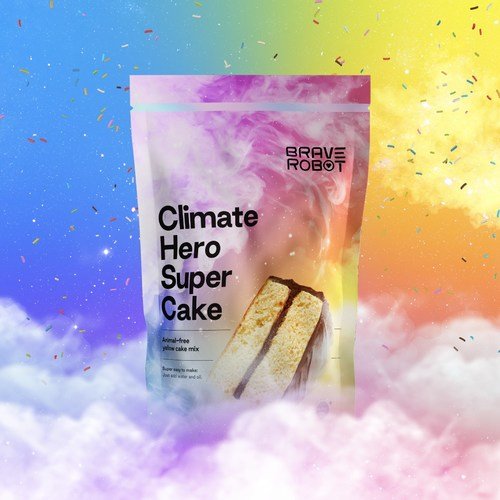Climatarian Diet & Climate Claims
In 2021 Wunderman Thomson put a spotlight on the word Climatarian, defined as the practice of eating for environmental health. Similarly, WGSN declared 2021 as a the year of Climatarian Diet. Food, and its cultivation, production, packaging, and shipping, is inextricably tied to climate change - contributing up to 30% of an individual’s carbon footprint - and consumers are starting to think beyond where their food comes from to the kind of impact it has on the planet. This is part of a larger shift in how consumers think not just about their carbon footprint, but about their carbon shadow.
CLIMATARIAN DIET
Considerations for following a Climitarian Diet include:
• Plant-based: Focusing the majority of caloric intake on plants rather than animal sources
• Plant-based with carbon neutrality: Offsetting, eliminating or mitigating carbon emissions and sustainability in packaging
• Climate hero foods: Ingredients produced from drought-resistant crops, store carbon or help preserve waterways through soil erosion
• Regeneratively farmed meats: Organic, grass-fed, rotational grazing, and ethically treated animals & workers
• Locally-sourced foods: Community gardens, urban rooftop, farmers’ markets, CSAs, foraging, aquaponics, and vertical farming with a smaller transportation footprint
• Organic, biodynamic, and regeneratively farmed foods: Sustainable land management with the intent to create a biologically harmonious environment
• Carbon labeling: Organizations like ROA, Demeter, and Climate Partners have specifications and regulations for their labels, while other brands are inventing their own
• Zero waste or up-cycled products: Using food waste or byproducts in new food products, or eliminating packaging or lengthening the longevity of packaging
(Source: WGSN, The Climatarian Diet).
LABELING
To help consumers make educated decisions, brands are increasingly using their package (or labeling) to communicate this information. Around two thirds of global consumers report they would support a universal climate change label (similar to the nutrition facts) to indicate a brand and/or business’s carbon footprint impact. Prototypes like this Eco-score demonstrate the ways this could come to life.
Eco-Score example design shows low (A) to high (E) impact on the environment via specific standards.
PACKAGING CLIMATE CLAIMS
Some brands are taking action on labeling now by bringing their climate claims to the front of their packaging; some are launching with climate concerns as core to their brand positioning and identity. Here are a few examples we’ve seen in retail.
Carbon Negative, an ice cream brand touts -2 lbs net CO2 per pint with a trademarked ‘Good Food Good for the Planet’ tagline.
Cascadian Farm’s Climate Smart cereal uses Kernza, a climate-smart grain with a root system that stores carbon in the ground to promote soil health, which reduces water pollution.
Blue Sky Family Farms launched Helpful Hens, a brand of pasture-raised organic eggs that takes climate education to the next level by breaking down the process of how regenerative agriculture creates a rich environment and thriving ecosystem.
Like Cascadian Farm, Patagonia has also embraced climate-positive grain Kernza and as part of their Provisions line, have launched a Kernza pasta with prevalent claim to regenerate topsoil and draw down carbon.
Zero Carbon Coffee has achieved Climate Neutral Certified status by measuring their 2019 greenhouse gas emissions footprint, purchasing carbon credits to offset that footprint, and implementing plans to reduce emissions this year and beyond. They are the first coffee brand to achieve Climate Neutral Certification.
Renewal Mill’s Upcycled Oat Milk Flour rebranded with its mission noted on the front of pack: “Fights Climate Change.” It’s an important shift in communicating and reasserting why the upcycled process for this brand matters.
OatUP is the world’s first regeneratively grown, carbon-neutral oat milk and is made using oats from local Western Australian farmers. Using a more assertive tone on their website, they ask consumers to buy OatUP to step up for their community and planet.
Packaged in a compostable bag, Climate Hero Super Cake uses no animal products in its ingredients and sustainably sources others.
UGLIES utilizes “potatoes are too large or too small, some are the wrong color, some are slightly blemished, and some are just farmer surplus.” Since their introduction they’ve saved more than 5,000,000 pounds of potatoes from landfills.
Nature’s Path Original Oatmeal has been redefined within the set, leading with a plant-first message: These Oats Help Save the Planet. The brand touts regenerative organic certifications to back up this bold front panel claim.
Force of Nature offers an ‘Ancestral Blend’ of ground beef, beef liver and beef heart that feels familiar to those following the nose to tail movement, which uses the whole animal in food production and cooking to eliminate food waste.
The examples above offer so much to think about in terms of brand communications versus positioning and then the long term implications if something like the Eco-label is put into place. Are these claims novel now, but become table stakes in a few years? Do these claims pull in an impassioned audience, or begin to grow awareness around climate concerns and shape future consumer behavior? Is this a version of purpose or mission driven branding or is this a fundamental change in how we discuss products holistically?
From a packaging perspective, I’m struck by how quickly brands with the credentials have pivoted in their package design to connect with consumers at point of purchase. It creates news for these brands and shifts how we talk about packaging communication.
Want to read more about sustainability from Ultra? Read about how we designed a sustainable chocolate gift and about circularity in package design.












